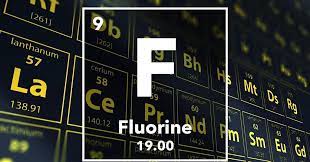Fluorine
Fluorine, a pale yellow gas at room temperature, holds a unique position in the world of elements. Despite its abundance in the Earth's crust, it's never found free in nature due to its extreme reactivity. This very characteristic makes it both a valuable tool and a potential hazard.
Fluorine boasts the title of the most electronegative element, meaning it readily attracts electrons from other elements. This fierce attraction fuels its relentless reactivity, allowing it to form compounds with virtually everything except the noble gases. This property finds applications in various industries, from strengthening refrigerants to producing high-performance materials. However, the same trait that makes fluorine valuable also makes it incredibly dangerous. Inhaling even small amounts of this gas can cause severe lung damage, and contact with skin or eyes can lead to painful burns. Therefore, handling fluorine requires specialized equipment and utmost caution.
While its potent nature demands respect, fluorine also plays a crucial role in human health. In controlled amounts, fluoride strengthens tooth enamel, preventing cavities. This essential mineral is often added to drinking water and toothpaste to promote dental health, especially in children. In essence, fluorine embodies a paradox. Its reactivity grants it immense potential, but it also necessitates careful handling. Understanding its properties and respecting its power are key to harnessing its benefits while mitigating its risks.
